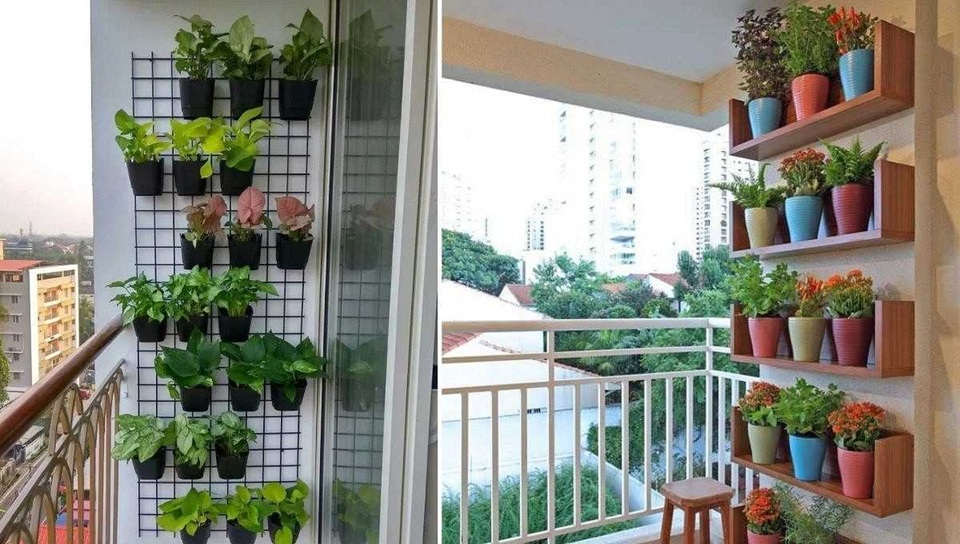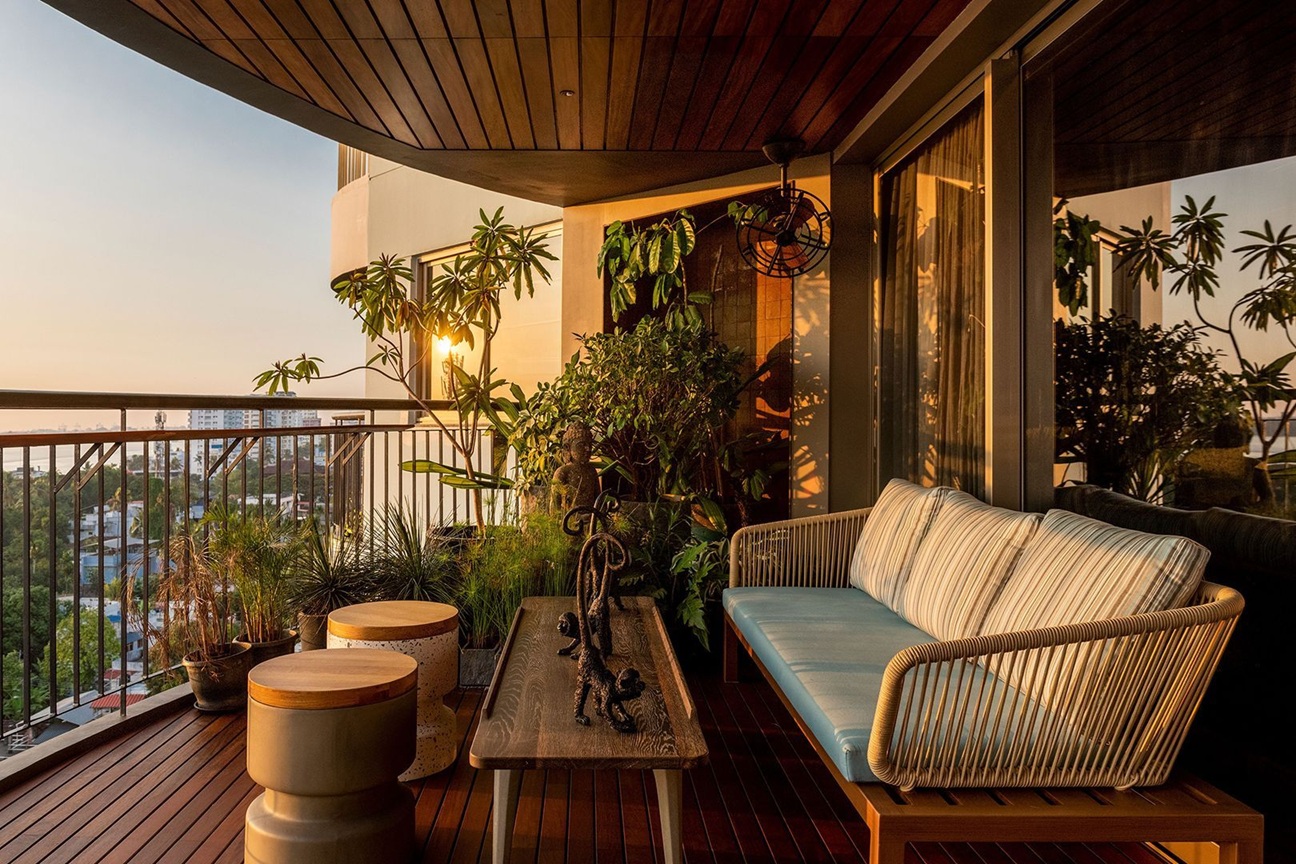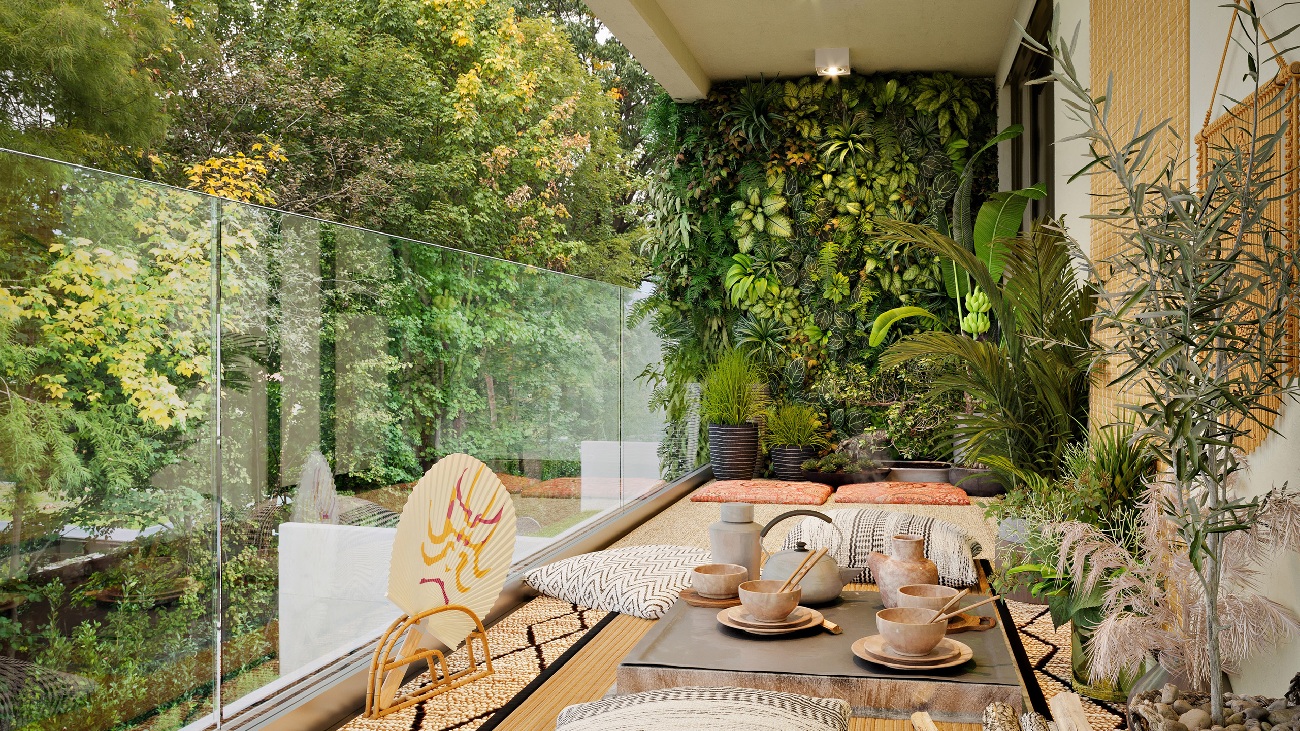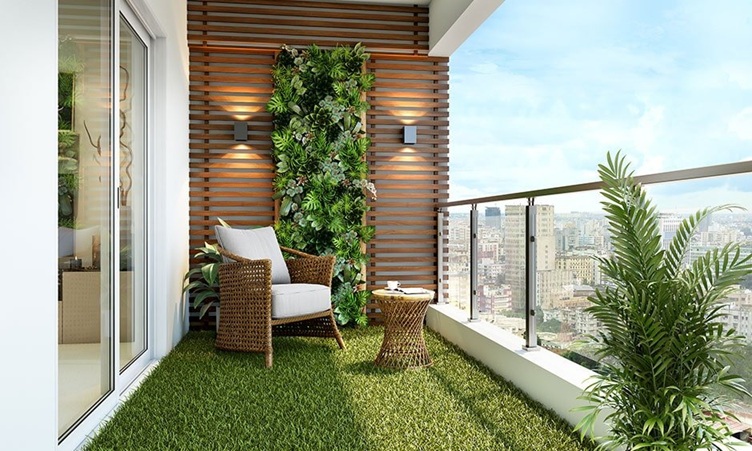Hanging gardens are a beautiful way to incorporate greenery into your home, especially if you live in an apartment or have limited outdoor space. They can turn a plain balcony into a lush, relaxing sanctuary. However, when setting up a hanging garden on your balcony, safety and structural integrity must be top priorities. Improper installations may lead to damage or even compromise the safety of your space.
Here’s a guide to safely installing a hanging garden on your balcony without risking structural damage, along with tips for lightweight materials, proper techniques, and plant selection.
-
Assess Your Balcony’s Weight Capacity
Before you start designing your hanging garden, it’s crucial to understand your balcony’s structural limits. Balconies have specific weight capacities, and exceeding them could damage the structure or pose safety risks.
How to Manage It:
Check with your building management or a structural engineer to determine the weight your balcony can handle.
Factor in the weight of your hanging garden, which includes pots, soil, plants, and any other accessories.
Quick Tip: Choose lightweight materials, like fiberglass or plastic planters, instead of heavier options like ceramic.
-
Choose the Right Hanging System
The type of hanging system you use matters just as much as the weight of your garden. A poorly secured setup can damage walls, ceilings, or railing and lead to accidents.
Safe Installation Techniques:
Ceiling Hooks: If attaching to the ceiling, use heavy-duty, weather-resistant hooks designed for outdoor weight loads. Anchor them into secure beams rather than drywall or plaster.
Over-the-Rail Hooks: For balcony railings, use hooks that are specifically designed to fit snugly and distribute weight evenly without damaging the railing.
Wall-Mounted Systems: For wall installations, screw in sturdy brackets or racks that can support your planters. Use wall anchors for added strength if mounting on drywall.
Quick Tip: Avoid hanging gardens on railings that are thin, weak, or already showing signs of wear and tear.
-
Opt for Lightweight Planters and Soil
Materials play a critical role in minimizing excess weight on your balcony. Choosing lightweight options ensures safety while still allowing your garden to thrive.
What to Use:
Fiberglass or plastic planters instead of heavy terracotta or concrete pots.
Use a soilless mix or lightweight potting soil to reduce the overall weight. These mixes often improve drainage and are better suited for hanging gardens.
Add coconut coir or perlite to make your soil even lighter.
Quick Tip: Self-watering planters can help you maintain your garden without the need for heavy, water-soaked pots.

-
Select the Right Plants
Plants vary in weight, especially when watered. Choose greenery that’s lightweight and well-suited to hanging gardens.
Great Choices:
Herbs like basil, mint, and thyme for both beauty and function.
Flowering plants such as petunias, pansies, or nasturtiums, which thrive in compact spaces.
Trailing plants like English ivy or string of pearls for a lush, cascading effect without heavy root systems.
Quick Tip: Avoid large vegetables or plants with deep root systems, as they tend to require heavier pots and soil.
-
Plan for Drainage
Proper drainage is essential to keep your plants healthy and prevent water damage to your balcony. Poor drainage can cause water to pool, damaging flooring or even dripping onto your downstairs neighbor’s space.
How to Prevent Issues:
Use pots with drainage holes to allow excess water to escape.
Add a tray or saucer to catch water under each planter, or line the floor beneath your garden with waterproof material to protect the surface.
Quick Tip: If you have a railing setup, avoid overwatering plants to prevent water from spilling over and causing messes below.
-
Balance Safety with Aesthetics
While it’s easy to get carried away designing a lush hanging garden, ensure you don’t overdo it. A clean, balanced arrangement not only looks better but is more stable and secure.
Tips to Keep in Mind:
Distribute weight evenly across the balcony. For example, combine hanging plants with potted ones on the floor.
Avoid overcrowding hooks or mounts, as this can strain the fixtures and lead to damage.
Use lightweight decorative elements, like fairy lights or wind chimes, to enhance the beauty without adding significant weight.
Final Thoughts
A hanging garden can elevate your balcony into a green haven, but safety must come first. By choosing lightweight materials, using secure hanging systems, and selecting the right plants, you can create a stunning garden without compromising your balcony’s structural integrity.
Take the time to plan carefully and build your hanging garden step by step. With the right setup, you’ll have a safe and serene balcony oasis to enjoy for years to come!




